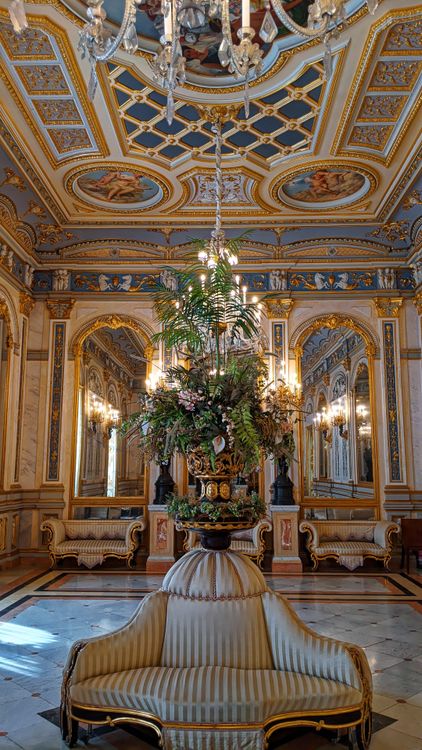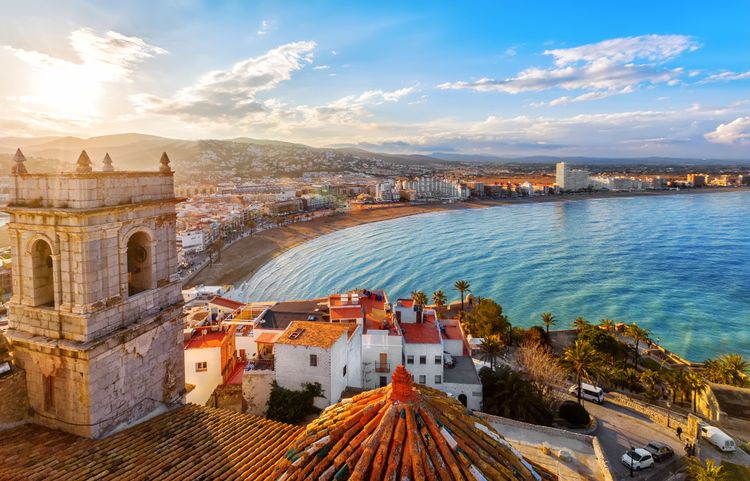The González Martí National Ceramics Museum is housed in the Palace of the Marquis of Dos Aguas, which is considered to be one of the finest examples of Baroque art in Spain. You may notice the profusion of pink alabaster sculptures, which were added in the mid-eighteenth century. You will be impressed by the splendour of the interiors.
The National Ceramics Museum (González Martí Museum), opened in 1954, is located in the Marqués de Dos Aguas palace, in an 18th-century stately home. It is entirely dedicated to the Valencian ceramics industry, as well as that of Manise (a neighbouring town that was one of Spain's most important producers in this field). In an exhibition of 2,500 pieces, dating from the 14th century to the present day, you will discover a wide variety of ceramics, veritable jewels in the crown of Hispano-Moorish art, which are now the envy of collectors.

Late Baroque and Rococo façade of the National Museum of Ceramics and Sumptuary Arts in Valencia
- © David Andres Gutierrez / ShutterstockA beautiful building

the Palace of the Marquis of Dos Aguas, built in Baroque style.
- © Marco Crupi / Shutterstock
some rooms have retained their original decoration and furnishings.
- © Heidar_Nouri / ShutterstockSome rooms, such as the ballroom, a smoking room, a porcelain room, the kitchen and the bedrooms, have retained their original decoration and furniture. You'll even be lucky enough to see an original Valencian kitchen! The tiles (azulejos) have been completely renovated, to get as close as possible to the original model.
The collections
Right from the front door, you will be plunged into the fascinating and superb world of ceramics: the doors of the palace are decorated with intricate designs representing Valencia's two great rivers (dos Aguas), the Turia and the Júcar, surrounded by animal and plant figures. For the owners of the Palace at the time, this was a way of showing their power, and their importance, to the rest of the population.
On the ground floor, you will see the coach of the Marquis of Dos Aguas, lavishly decorated with engravings and gold leaf.
The evolution of ceramics
¨NBSP; View this publication on Instagram
Your chronological tour of the museum will help you to understand the evolution and different techniques used to make ceramics over time, but also according to the region. Manises, Paterna and Alcora, for example, did not have the same manufacturing methods. Between the 14th and 16th centuries, ceramics with a metallic sheen and blue decoration from Manises were highly prized by princes and pontiffs. From the 17th to the 19th centuries, ceramics were used less and less for decorative objects, so craftsmen began to produce earthenware tiles with bright polychromatic patterns and imaginary motifs. This conversion gave Manises a new lease of life.
You'll see that there has been a great evolution from prehistoric works to the most modern designs. There are even pieces by Picasso on display!
The museum also has a large donation of pieces from the Casanova Sanchís family, the former owners of the house. Part of the visit is dedicated to the daily life of this famous Valencian family, who played an important role in the city.
Practical information
Closed on Mondays. Tuesday to Saturday from 10:00 to 14:00 and from 16:00 to 20:00. Sundays and public holidays from 10:00 to 14:00.
Evening visits during July and August: Saturdays from 20:00 to 24:00 h. Closing days: Monday Timetable information
👛 Price
3 (adults), €1.50 (groups). Under-18s, over-65s, unemployed and retired, free admission. Saturday afternoon and Sunday, free admission.






